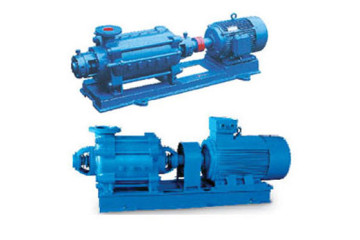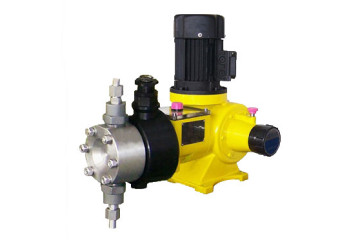High Pressure Pump Introduction
A high pressure pump is also known as a piston pump or a high pressure hydraulic pump. It uses separate piston check valves to direct the flow of the pumped liquid from the pump’s inlet side to the outlet port. The pump contains positive-seating check-ball valves that are designed to offer better wear as well as high volumetric efficiency, particularly at high pressure. These pumps usually operate at high pressures of up to 20,000 psi.
How It Works
During high pressure pump operation, a fixed-angle wobble plate spins with the drive shaft in order to make the pistons reciprocate. During the suction stroke, the pistons are filled through the inlet check valve. During the compression stroke, the inlet check valve closes and the pressure in the pumping cavity increases until it exceeds the load pressure. The pumped liquid is then pushed out of the chamber after the outlet check ball valve lifts off its seat.
Applications
The high pressure pump design is suited for hydraulic systems that have demanding conditions. It has a wide range of applications that with demanding conditions such as pressure spikes, contamination, dirty environments, special fluids, extreme temperatures, and long duty cycles. The pumps can accommodate more force in a smaller package. At low pressures, the high pressure pump can provide the performance margin and life that is vital in critical environments.
Benefits
The positive seating action of the pump’s check valves offers greater volumetric efficiency and better wear, especially for high pressure pump operations that range from 6,000 psi to 20,000 psi. During operation, the pump’s check ball spins to provide a consistent working area of wear.
The pump also offers efficient pressure compensation. In pressure compensated high pressure pump models, liquid moves through the pump and back to the tank at comparatively low pressure. This offers stable temperatures with minimal heat increase even when compensating for lengthy periods.
Additionally, a valve-plate that is common in other pump designs is replaced with check valves in a high pressure pump. The metal-to-metal spinning sealing surface that is common in other pumps is prone to leakage and subject to scoring and wear, especially with contaminated fluids and liquids with lower lubricity.
The check valves also isolate the pump’s pistons from the system pressure during start-up. This allows the piston shoes to create an oil film before generating any pressure, resulting in lower starting torque and prolonged bearing life.


